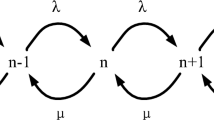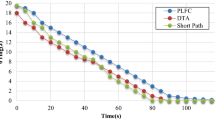Abstract
Vocal learning has found its proliferation in recent years due to the advancement in wireless networking. Vocal art encompasses profound cultural values and aesthetic preferences, making wireless platforms, e.g. Wi-Fi and ZigBee, essential for the enhancement of online vocal learning. ZigBee, as a wireless platform, has more recently been used quite frequently for online vocal learning and music. This paper aims to design an efficient wireless-enabled platform by using the lightweight features of ZigBee to support online vocal learning and expressions. The platform enables data transmission, storage, analysis, and playback of vocal learning sounds through the ZigBee network. It is built on a cloud platform, utilizing Docker virtualization technology to deploy a Hadoop distributed cluster, effectively simulating a distributed environment. The platform incorporates a model for recognizing musical sound and noise signals, empowering the online learning control platform to detect various characteristics of vocal music tones. Vocal music learning is enhanced by extracting endpoint fusion spectrum features and employing a tone adjustment and dynamic detection model. The proposed method improves anti-interference capability, online learning control, vocal tone recognition, and emotional expression accuracy. Simulation results demonstrate its effectiveness in vocal music, online learning control, and tone recognition, leading to more precise vocal music pronunciation and intonation registration.










Similar content being viewed by others
Availability of data and material
The data used to support the findings of this study are available from the corresponding author upon request.
References
Lv, Z., Qiao, L., & Nowak, R. (2022). Energy-efficient resource allocation of wireless energy transfer for the internet of everything in digital twins. IEEE Communications Magazine, 60(8), 68–73.
Kong, H., Lu, L., Yu, J., Chen, Y., & Tang, F. (2021). Continuous authentication through finger gesture interaction for smart homes using WiFi. IEEE Transactions on mobile computing, 20(11), 3148–3162.
Mi, C., Huang, S., Zhang, Y., Zhang, Z., & Postolache, O. (2022). Design and implementation of 3-D measurement method for container handling target. Journal of Marine Science and Engineering, 10(12), 1961.
Peng, Z., Hu, J., Shi, K., Luo, R., Huang, R., Ghosh, B. K., & Huang, J. (2020). A novel optimal bipartite consensus control scheme for unknown multi-agent systems via model-free reinforcement learning. Applied Mathematics and Computation, 369, 124821.
Li, B., Li, Q., Zeng, Y., Rong, Y., & Zhang, R. (2021). 3D trajectory optimization for energy-efficient UAV communication: A control design perspective. IEEE Transactions on Wireless Communications, 21(6), 4579–4593.
Li, B., Zhang, M., Rong, Y., & Han, Z. (2021). Transceiver optimization for wireless powered time-division duplex MU-MIMO systems: Non-robust and robust designs. IEEE Transactions on Wireless Communications, 21(6), 4594–4607. https://doi.org/10.1109/TWC.2021.3131595
Wang, H., Cui, Z., Liu, R., Fang, L., & Sha, Y. (2023). A multi-type transferable method for missing link prediction in heterogeneous social networks. IEEE Transactions on Knowledge and Data Engineering.
Lu, S., Ding, Y., Liu, M., Yin, Z., Yin, L., & Zheng, W. (2023). Multiscale feature extraction and fusion of image and text in VQA. International Journal of Computational Intelligence Systems, 16(1), 54.
Cao, K., Wang, B., Ding, H., Lv, L., Dong, R., Cheng, T., & Gong, F. (2021). Improving physical layer security of uplink NOMA via energy harvesting Jammers. IEEE Transactions on information forensics and Security, 16, 786–799.
Cao, K., Wang, B., Ding, H., Lv, L., Tian, J., Hu, H., & Gong, F. (2021). Achieving reliable and secure communications in wireless-powered NOMA systems. IEEE Transactions on Vehicular Technology, 70, 1978–1983.
Besser, A., Lotem, S., & Zeigler-Hill, V. (2020). Psychological stress and vocal symptoms among university professors in Israel: Implications of the shift to online synchronous teaching during the COVID-19 pandemic. Journal of Voice, 36(2), 291.e9-291.e16.
Bedoya, D., Arias, P., Rachman, L., et al. (1840). Even violins can cry: Specifically, vocal emotional behaviours also drive the perception of emotions in non-vocal music. Philosophical Transactions of the Royal Society B: Biological Sciences, 2021(376), 20200396.
Riddell, F. (2020). Disembodied vocal innocence: John Addington Symonds, the Victorian Chorister, and Queer musical consumption. Victorian Literature and Culture, 48(3), 485–517.
Hunter, E. J., Berardi, M. L., & Whitling, S. (2022). A semiautomated protocol towards quantifying vocal effort with vocal performance during a vocal loading task. Journal of Voice: official journal of the Voice Foundation, 63(4), 221–226.
Paul, A., McLendon, H., Rally, V., et al. (2021). Behavioral discrimination and time-series phenotyping of birdsong performance. PLOS Computational Biology, 17(4), 1–21.
Mini, P., Thomas, T., & Gopikakumari, R. (2021). EEG-based direct speech BCI system using a fusion of SMRT and MFCC/LPCC features with ANN classifier. Biomedical Signal Processing and Control, 68(2), 102625.
Huizen, R., Kurniati, F. T. (2021). Feature extraction with mel scale separation method on noise audio recordings. 24(2), 815-824.
Soundarya, B., Krishnaraj, R., & Mythili, S. (2021). Visual speech recognition using convolutional neural network. IOP Conference Series Materials Science and Engineering, 1084(1), 012020.
He, H., Chen, X., Mehmood, A., et al. (2020). ClothFace: A batteryless RFID-based textile platform for handwriting recognition. Sensors, 20(17), 4878.
Tian, H., Liu, J., Chang, C., et al. (2020). Detecting steganography in inactive voice-over-IP frames based on statistic characteristics of fundamental frequency. IEEE Access, 8, 6117–6129.
Sun, J. (2020). Research on resource allocation of vocal music teaching system based on mobile edge computing. Computer Communications, 160(2), 342–350.
Velayutham, S., Pandiyan, S., Lawrence, T. S., et al. (2020). A performance-aware dynamic scheduling algorithm for cloud-based IoT applications. Computer Communications, 160(1), 512–520.
Yao, F., Yang, S. H., & Xia, B. (2008). A ZigBee based home automation: System design and implementation. Measurement and Control, 41(10), 310–314.
Orand, A., Tomita, Y., Okamoto, S. and Sonoda, S., (2015). On the design and development of a Zigbee-based multimodal input-output monitoring-actuating system. International Journal of Electrical & Computer Engineering (2088–8708), 5(5).
Benalia, E., Bitam, S., & Mellouk, A. (2020). Data dissemination for Internet of the vehicle based on 5G communications: A survey. Transactions on Emerging Telecommunications Technologies, 31(5), e3881.
Nikoukar, A., Raza, S., Poole, A., Güneş, M., & Dezfouli, B. (2018). Low-power wireless for the Internet of Things: Standards and applications. IEEE Access, 6, 67893–67926.
Swan, M. (2012). Sensor mania! the Internet of Things, wearable computing, objective metrics, and the quantified self-2.0. Journal of Sensor and Actuator Networks, 1(3), 217–253.
Tyack, P. L. (2020). A taxonomy for vocal learning. Philosophical Transactions of The Royal Society B Biological Sciences, 375(1789), 20180406.
Yalagi, P. S., Dixit, R. K., & Nirgude, M. A. (2021). Effective use of online teaching-learning platform and MOOC for virtual learning. Journal of Physics: Conference Series, 1854(1), 012019.
Sun, J. (2020). Research on resource allocation of vocal music teaching system based on mobile edge computing. Computer Communications, 160(1), 342–350.
Castro, V. P. (2022). Noise and signal as ground and figure: Emergence and interference in media ecologies. Palgrave Communications, 9(1), 1–9.
Aslam, A., & Khalid, Z. (2020). Joint SO(3)-spectral domain filtering of spherical signals in the presence of anisotropic noise. IEEE Signal Processing Letters, 27, 2109–2113.
Upadhyaya, V., Sharma, G., Kumar, A., et al. (2021). Quality parameter index estimation for compressive sensing based sparse audio signal reconstruction. IOP Conference Series: Materials Science and Engineering, 1119(1), 012005.
Chen, W., & Chen, C. (2016). Research on online voice learning platform design based on ZigBee wireless network technology. Wireless Personal Communications, 86(2), 729–745.
Wang, J., Liu, F., & Chen, H. (2019). Design and implementation of an online voice learning system based on ZigBee wireless network. Journal of Physics: Conference Series, 1194(4), 042085.
Acknowledgements
The paper did not receive any financial support
Author information
Authors and Affiliations
Corresponding author
Ethics declarations
Conflict of interest
Declares that he has no conflict of interest.
Additional information
Publisher's Note
Springer Nature remains neutral with regard to jurisdictional claims in published maps and institutional affiliations.
Rights and permissions
Springer Nature or its licensor (e.g. a society or other partner) holds exclusive rights to this article under a publishing agreement with the author(s) or other rightsholder(s); author self-archiving of the accepted manuscript version of this article is solely governed by the terms of such publishing agreement and applicable law.
About this article
Cite this article
Wan, M. Designing an online vocal learning based on ZigBee-enabled wireless platform. Wireless Netw 30, 179–192 (2024). https://doi.org/10.1007/s11276-023-03443-0
Accepted:
Published:
Issue Date:
DOI: https://doi.org/10.1007/s11276-023-03443-0




